
Imagine you’re trying to use a new app or website, but you just can’t figure out how to do it and, what you need to do. The buttons are confusing, the layout is overwhelming, and you’re left feeling frustrated and annoyed.
Now imagine the opposite scenario: Yyou’re using an app or website that feels like it was designed just for you. It’s easy to navigate, the information you need is right at your fingertips, and using it is actually enjoyable.
The difference between these two scenarios is the result of something called user experience (UX) design. UX designers focus on creating digital products that are intuitive, easy to use, and enjoyable for the user.
Why this UX Design important?
Well, think about it: if a digital product is difficult or frustrating to use, people simply won’t use it. They’ll give up and move on to something else. But if a digital product is designed with keeping the user in mind, it’s more likely to be successful.
tudies have shown that investing in digital user experience design UX design can have a huge impact on a digital product’s success. For example, it can lead to more people using the product, better customer satisfaction, and even increased revenue for the company.
So, whether you’re a user trying to navigate a digital product, or a company trying to create one, you must understand the role of digital product user experience design in delivering a successful and enjoyable experience.
What is User Experience (UX)?
User experience (UX) is all about making products easy to use and enjoyable for people. UX product designers create products that align with user needs and behaviour and help companies build brand loyalty and increase revenue generation.
A Good digital UX design can make a big difference in the success of a product or service. It helps people use the product with ease and have a positive experience, which leads to more usage and recommendations. On the other hand, bad below-average UX design can cause frustration and negative reviews, and ultimately hamperrm the success of the product.
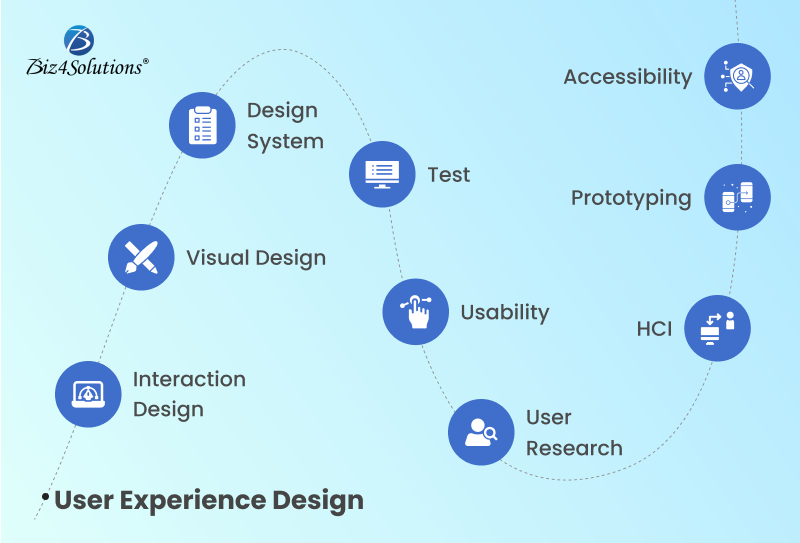
Apart from that, User Experience (UX) design involves multiple dimensions beyond just its definition. These dimensions include interaction design, information architecture design, visual design, usability, accessibility design, and more. These dimensions work together to create a cohesive and effective user experience.
So, UX design is really important when it comes to creating digital products that people will love to use!
What is User Interface (UI)?
User Interface (UI) is the way a product looks and works, like the buttons and menus on a website or app. Think of it like the way a car dashboard looks and works, with buttons and displays that help you control the car.
UI designers create a design that looks good and is easy to use. They choose colors, fonts, and layouts that make the product look nice and help people use it easily.
So, User Interface (UI) is all about the way a digital product looks and works, and it’s really important for making the product easy to use and look good too!
The Importance of UI and UX Design important?
UI and UX design is important for creating products that users enjoy using and find easy to navigate. Good UX design focuses on making sure that the product meets the needs of the user and is intuitive to use, while UI design focuses on making the product visually appealing and effortless to navigate. When a digital product has good UI and UX design, it can increase customer satisfaction, build loyalty, and even increase revenue.
Here are some examples of a successful digital products (Apps) with an excellent UX/UI design:
- Spotify: The popular music streaming platform . Spotify has a personalized and easy-to-use UX design that allows users to easily find and listen to their favourite music, while the UI design is visually appealing and easy to navigate.
- Airbnb: The platform provides a personalized and seamless experience for users, from searching for accommodations to making bookings and leaving reviews. The UX design of the platform is so intuitive and user-friendly that even first-time users can easily navigate it.
- Instagram: The platform has a visually appealing and intuitive UI design that allows users to easily upload and share photos, interact with other users, and explore content.
- Trello: This project management app has a visual and intuitive UX design that allows users to easily organize and prioritize tasks, while the UI design is simple and clean.
Overall, these examples show how good UX and UI design can improve the user experience and make digital products more user-friendly, which can lead to increased customer satisfaction, loyalty, and revenue.
Examples of user experience design that negatively affects the product:
Creating a simple button may seem easy, but it can actually be a significant design challenge. However, the two examples below will demonstrate how simple button design can significantly impact a product’s usability.
Button 1 : In the year 2000, “Pressing a button to determine who will govern the country(US).”

The 2000 US presidential election faced issues in Florida due to a confusing design of the voting system. The butterfly ballot used had buttons that caused confusion among voters, leading to problems in the voting process. This design led many voters to accidentally choose the wrong political party. George Bush needed to win in Florida to become president, and the confusing design helped him. Many voters accidentally voted for the Reform Party instead of the Democratic Party, causing Al Gore to lose thousands of votes.
Overall, the butterfly ballot story highlights the importance of a digital product’s UX design UX design in creating effective button interfaces that facilitate accurate and efficient decision-making. By prioritizing UX design in the design process, designers can help ensure that their button interfaces are intuitive, effective, and satisfying for users.
Button 2: Press a button to suddenly switch off the car engine while driving at high speed.
Let’s take a more recent example of yet another seemingly “simple button. In 2015, there was a problem with the Start/Stop button in some American Lincoln cars. 13,574 cars had to be recalled because drivers were pressing the button accidentally while driving fast. This caused the cars to turn off suddenly, which is dangerous when driving at high speeds.
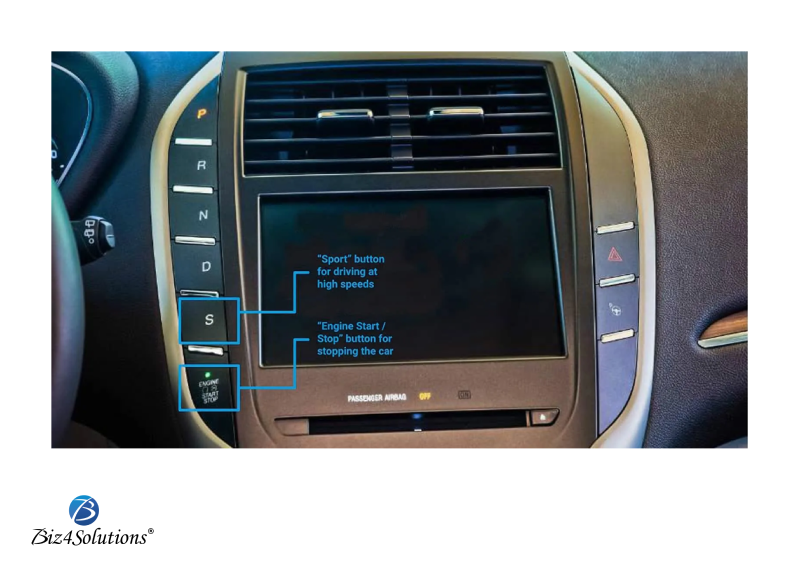
The people who designed the Lincoln cars put the Start/Stop button right below the “S” button, which is for “Sport”. When people are driving fast, they usually want to press the “Sport”/”S” button. They don’t have a lot of attention to spare because they have to keep their eyes on the road. So, some people accidentally pressed the “Engine Stop” button instead of the “S” button above it. This caused their cars to stop suddenly while they were driving fast.
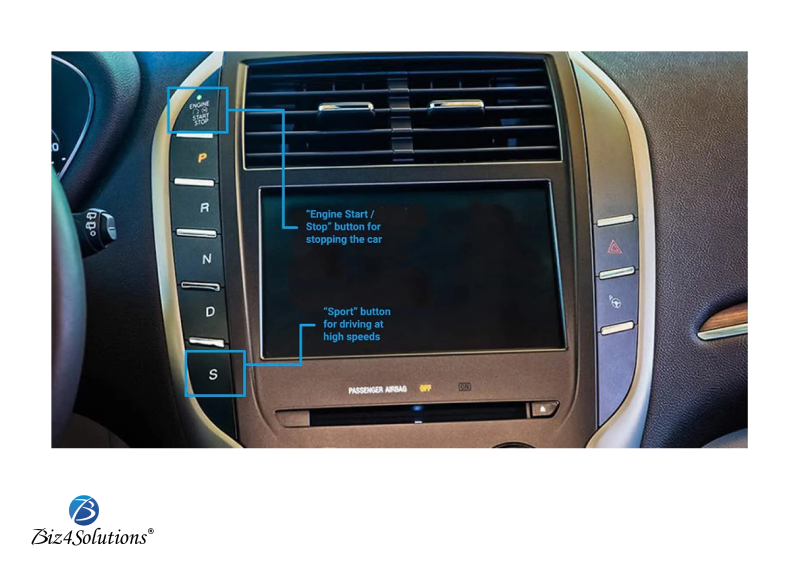
Lincoln had to call back 13,574 cars and put the button in a different place to fix the problem. It was like a “usability patch”. They moved the “Sport”/”S” button to the far end of the row of buttons, so drivers were less likely to press the “Stop Engine” button by mistake while driving fast.
What makes a great user experience?
Digital user experience design UX design is not just about creating visually appealing buttons, shapes, and adding colors. It is a complex process that involves many technical terms and requires a deep understanding of user psychology, usability, accessibility, and user behaviour patterns.
Designing digital products that are easy to use and make users happy requires more than just adding colors and shapes. Designers need to understand how the targeted users think, behave, and feel while interacting with the digital product. They need to conduct user research, gather data, and analyze user behaviour patterns to identify pain points and areas for improvement.
Usability is a critical aspect of UX design. Designers need to ensure that the product is easy to use and navigate. This involves designing interfaces that are intuitive and straightforward, with clear and concise labels, feedback, and instructions.
Accessibility is another important factor in UX design. Designers need to make sure that the product can be used by as many people as possible, regardless of their physical or cognitive abilities. This involves designing interfaces that are easy simple to use and navigate for people with disabilities, such as visual impairments or motor disabilities.
User psychology is also a crucial component of UX digital product design. Designers need to understand how users perceive, think, feel, and behave while interacting with digital products. This knowledge helps designers create interfaces that are tailored to users’ needs and preferences.
The User Experience Design Process (UX):
The success of a product depends on how users feel about its digital user experience design; if they don’t like it, they will buy or use competitors’ products.
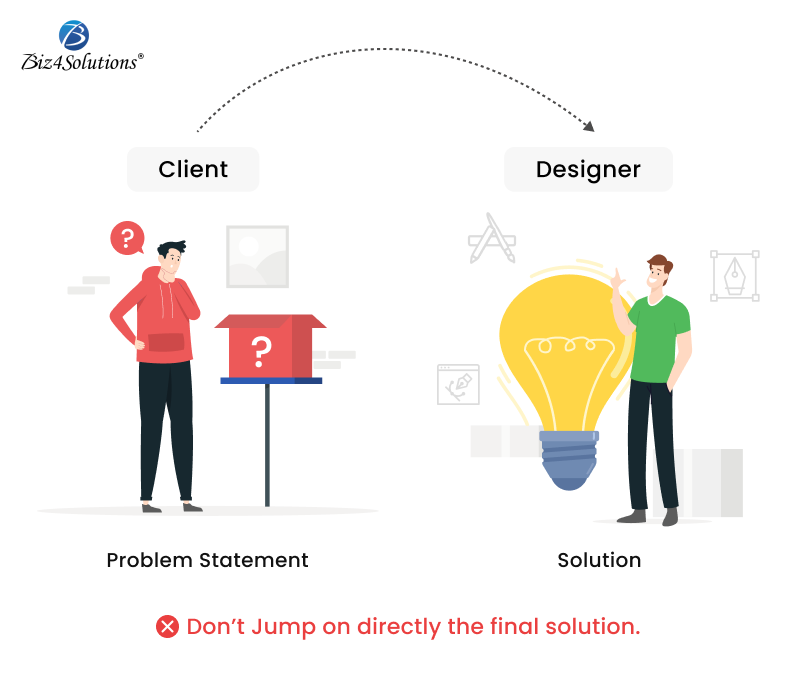
Many designers or companies tend to skip the problem analysis stage and jump straight into the phase of proposing solutions when a client presents a problem. Because some clients may not have the budget or time for a lengthy problem analysis process, skipping this step has caused designers to jump straight into proposing solutions. However, it’s crucial to remember that investing time in problem analysis can ultimately save time and money in the long run. This is because it ensures that the proposed solutions truly meet the client’s needs.
The initial investment in the design phase is highly beneficial for the long-term goals of the business. By covering all potential problems with solutions during the design phase, we can create a clear roadmap for our product. This ultimately saves time and cost during the development phase and allows for the launch of a bug-free product that provides a great digital user experience. By achieving this, we can successfully meet our business goals.
This is what problem-solving looks like through a UX lens:
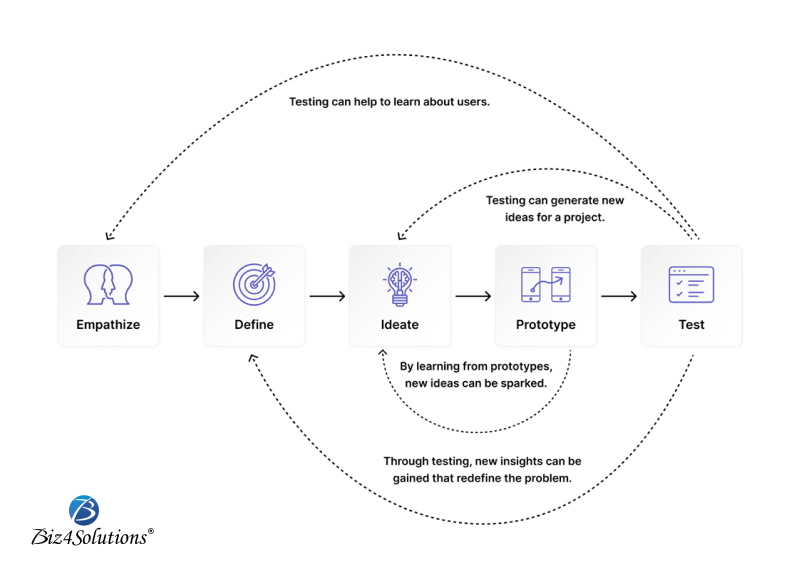
Design Thinking Process: The process of design thinking is both iterative and non-linear. and It has five phases, namely Empathize, Define, Ideate, Prototype, and Test. It is possible to execute these stages concurrently, iterate them, and revisit a previous stage at any stage phase in the design process.
1. Empathize:
The Empathize stage is all about understanding the user’s needs, wants, and challenges. This involves putting yourself in their shoes and seeing the problem from their point of view. It You can do this by observing them targeted users in their natural environment, listening to their stories and experiences, and conducting interviews and surveys to gather insights.
The goal of the Empathize stage is to gain a deep understanding of the user’s needs and pain points. This understanding helps you to frame the problem and designers are tryingtry to resolve the issue in a way that is meaningful to the user. By empathizing with the user, the designer can identify their underlying motivations and emotions, which can help to design a solution that meets their needs in a more holistic way.
Some common techniques used in the Empathize stage include creating user personas, empathy maps, and journey maps. These tools help to visualize and understand the user’s experience and can guide in developing solutions that are more user-centricered.
2. Define:
Once the UX designer has a good understanding of the user’s needs, they can define the problem they want to solve. At this stage, the UX designer synthesizes the information gathered during the empathize stage to create a problem statement that captures the key challenges they need to address.
3. Ideate:
In the Ideate stage, UX designers generate a wide range of ideas to solve the problem they defined in the Define stage. The UX designer team brainstorms and tries to generate as many ideas as possible without worrying about whether they are practical or not.
4. Prototype:
In the Prototype stage of design thinking, Create create a basic, low-cost version of your solution to test with users. This can be as simple as a sketch or a digital mock-up.
Finally, you test your prototype with users to get feedback from users them and identify any potential problems or areas for improvement before investing more time and resources into a final solution.
This stage helps you to iterate on your solution until you have a final product that meets the needs of your users.
Overall, design thinking is a flexible, iterative process that can help you create innovative solutions to complex problems.
How UX design can reduce development costs?
An effective digital UX design can help reduce development costs in various ways:
1) Reducing Rework:
By incorporating UX design early in the development process, potential usability issues can be identified and resolved before the development work begins. This helps avoid costly rework that would be required if these issues were are discovered during the later stages in of the development cycle.
2) Streamlining Development:
A well-designed user interface, combined with a design system, can help simplify development by reducing complexity and streamlining the development process. A design system provides a set of pre-defined design standards, components, and guidelines that can be reused across different products and platforms. By incorporating a design system into the development process, developers can focus on writing clean, efficient code that meets the user’s needs, while ensuring consistency and coherence in the design. This not only speeds up development but also reduces the likelihood of errors and inconsistencies.
3) Improving Efficiency:
When UX designers and developers work closely together, they can make development faster and more efficient, which gets products to market faster. This saves money because it reduces the time and resources needed to create the product.
4) Minimizing support costs:
To design a user interface that’s easy to use, people don’t need a great deal of training or support. This can save organizations a lot of money because providing training and support can be expensive. An intuitive interface means people can figure out how to use it on their own.
5) Increasing user satisfaction:
Providing a good user experience can make users happy, which can make them more loyal and likely to return. This can save money on carrying out customer acquisition and retention strategies because satisfied customers are more likely to refer the product or service to others.
Conclusion:
User experience (UX) design is essential for creating successful digital products that not only provide an enjoyable experience for users, but also fulfill the product owner’s business goals.
UX design can help businesses identify and solve user pain points, improve engagement, increase conversions, and ultimately, drive revenue growth.
In addition, incorporating UX design into the product development process can also help businesses save time and money in the long run. By focusing on user needs and preferences early on, teams can avoid costly redesigns and fixes down the line. That’s the reason why entrepreneurs these days, prefer partnering with experienced UI and UX design and development services to create their software solutions.
